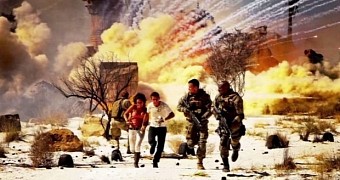Not to be mean or anything of the sorts, but the fact of the matter is that there are plenty of movies and movie directors out there that owe their popularity to science. Well, to the chemistry behind big, powerful blasts, to be more precise.
As explained in the video below, explosions like the ones we see in the movies boil down to converting potential energy in the form of chemical bonds into heat, a whole lot of gases and kinetic energy. The more heat and gases an explosion coughs out, the more impressive it is.
The majority of explosions happen when two or more chemical compounds are combined. For instance, dynamite is essentially the love child of trinitrotoluene and nitroglycerin. Gun powder, on the other hand, comprises nitroglycerin and nitrocellulose.
The thing about movie explosions is that, more often than not, the people staging them pick and choose the chemical compounds that are sure to produce massive amounts of smoke and insanely powerful shock waves when interacting with one another.
Then again, it's safe to assume more tranquil blasts would fail to do the trick and keep us entertained. In turn, this would leave movie produces with no choice but strain their brains trying to come up with an actual plot instead of just demand cash in exchange for explosions.

 14 DAY TRIAL //
14 DAY TRIAL // 